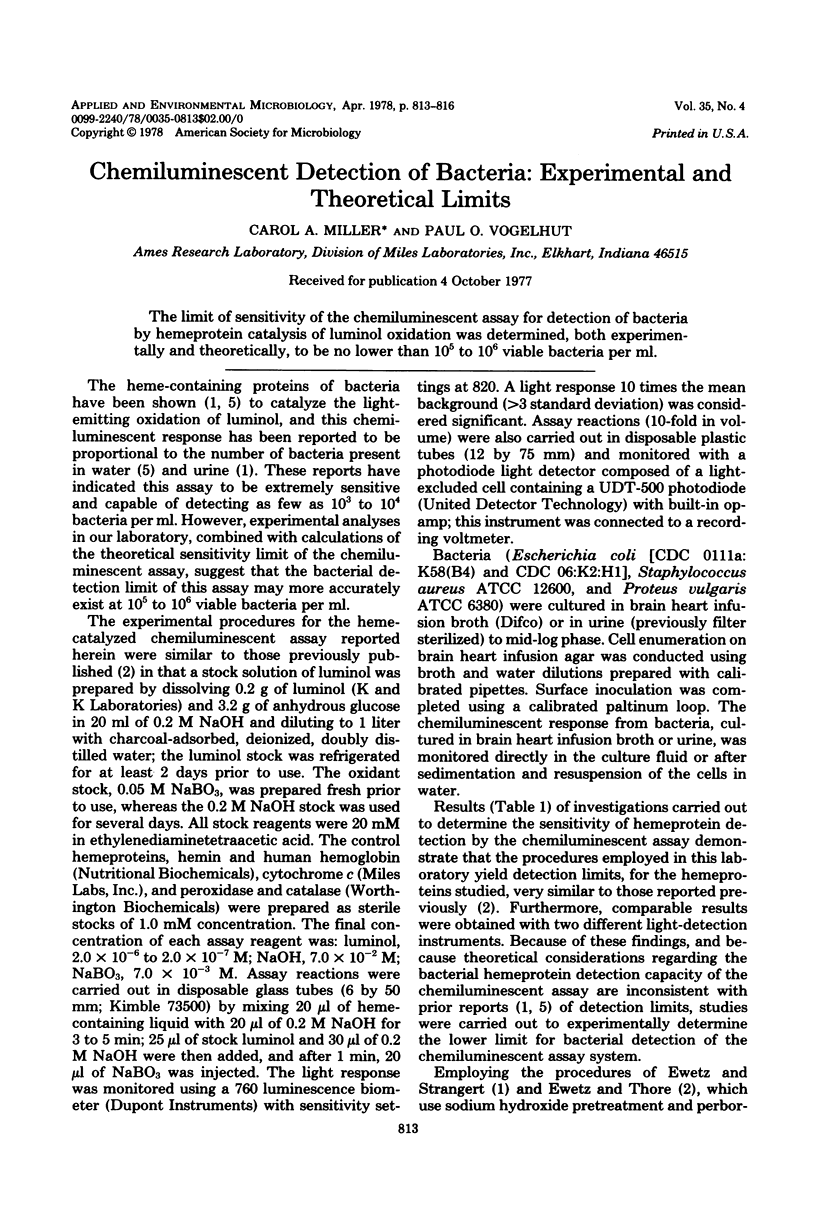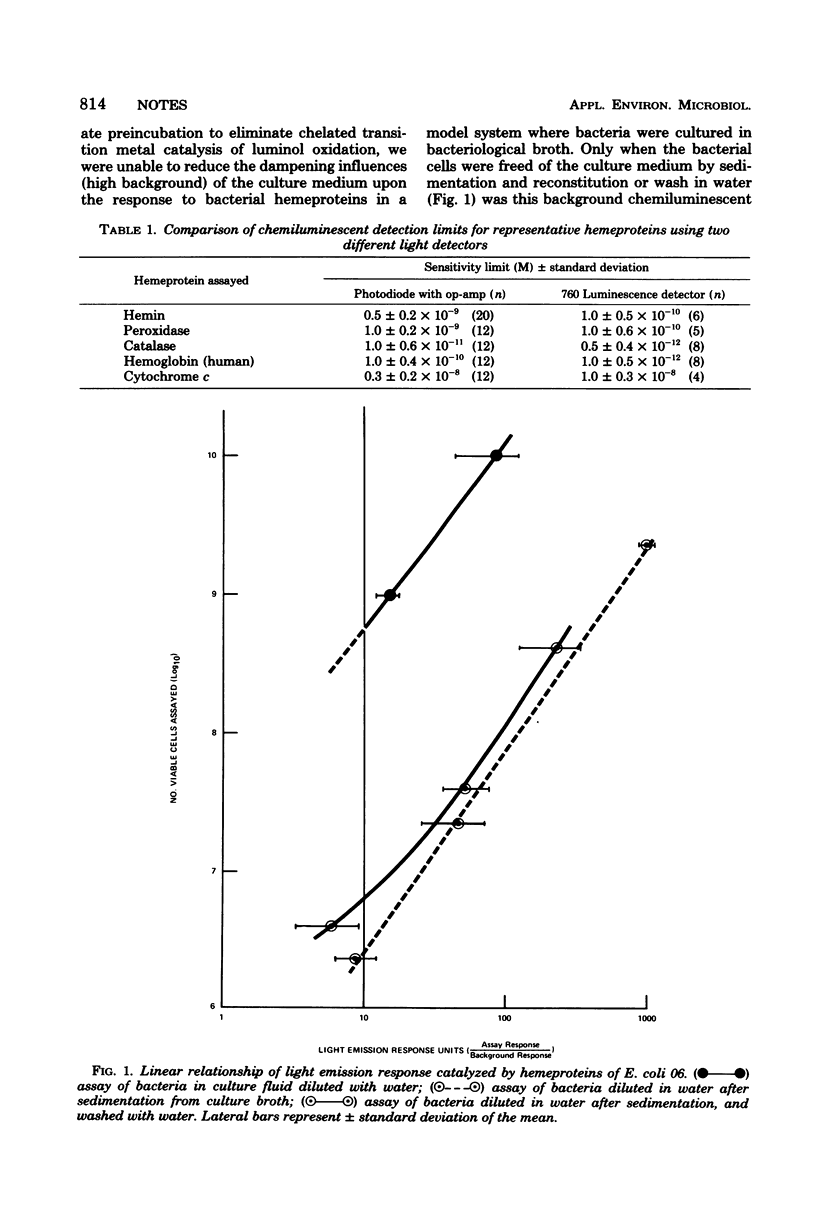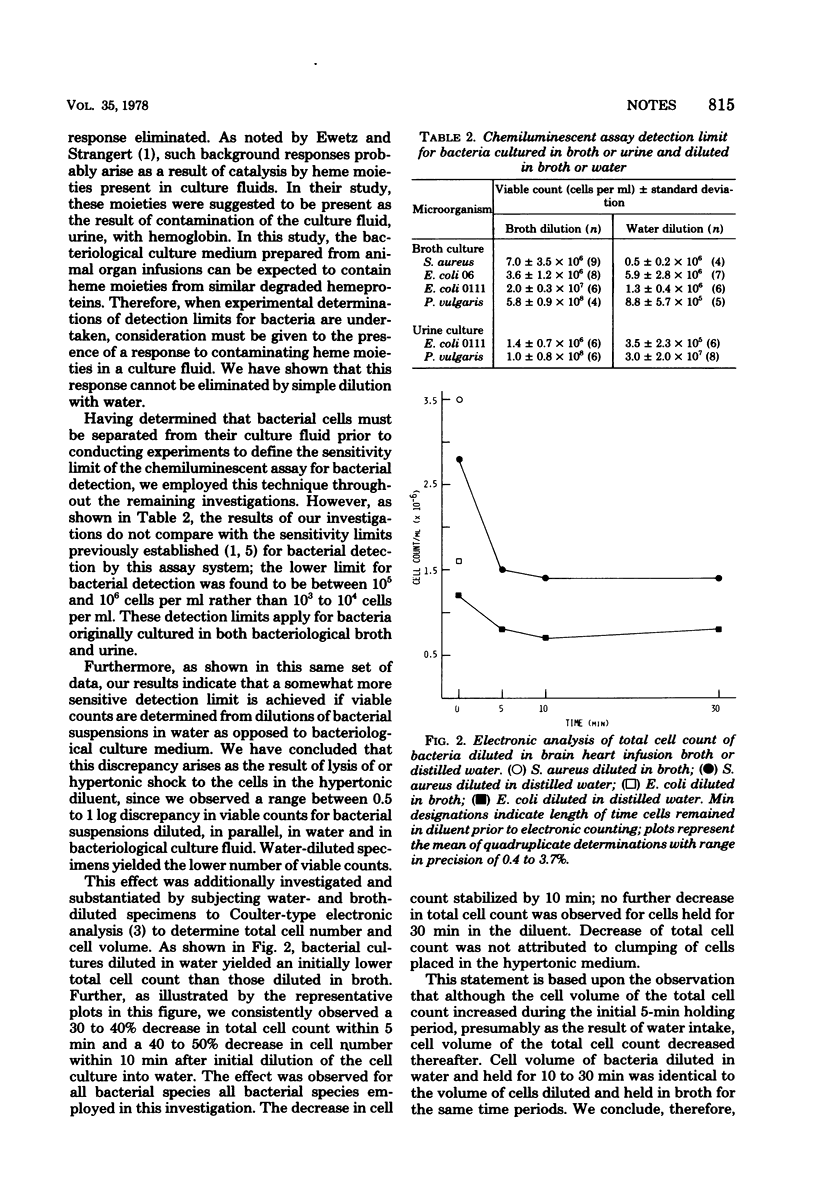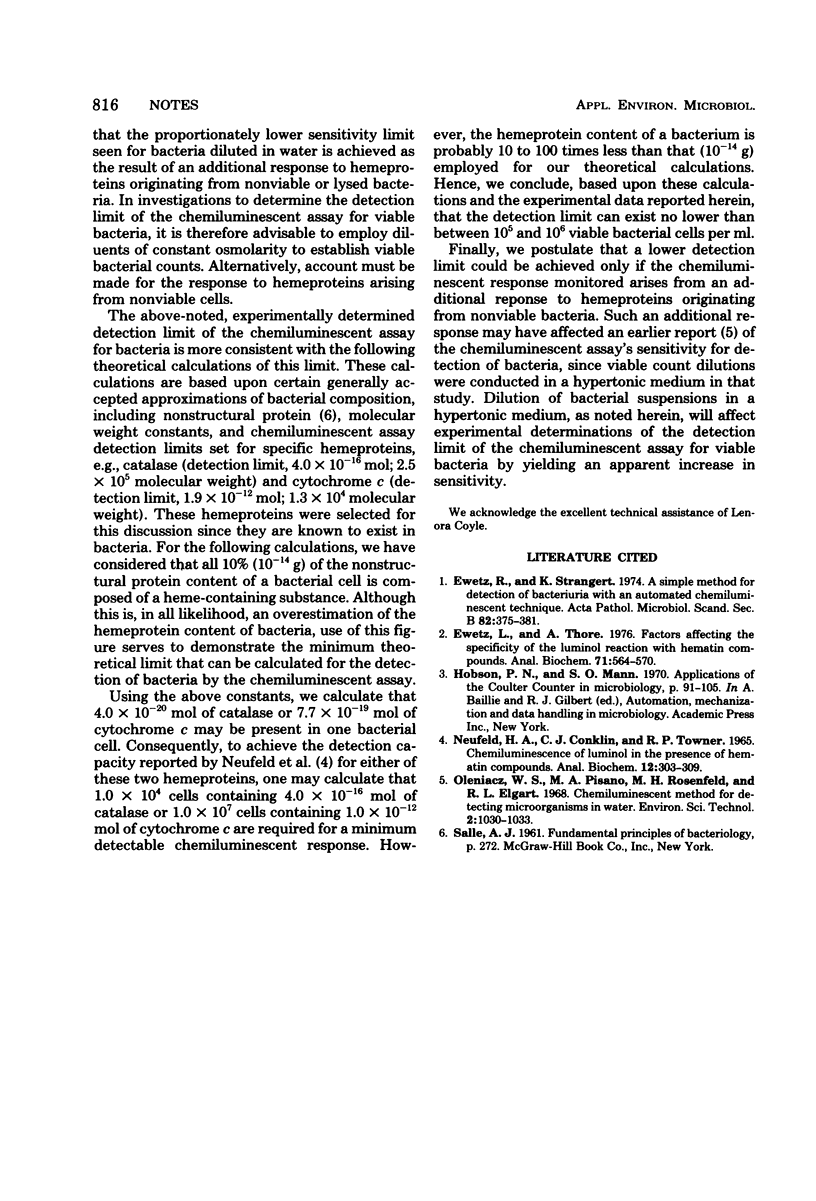Abstract
The limit of sensitivity of the chemiluminescent assay for detection of bacteria by hemeprotein catalysis of luminol oxidation was determined, both experimentally and theoretically, to be no lower than 10(5) to 10(6) viable bacterial per ml.
Full text
PDF



Selected References
These references are in PubMed. This may not be the complete list of references from this article.
- Ewetz L., Strangert K. A simple method for detection of bacteriuria with an automated chemiluminescence technique. Acta Pathol Microbiol Scand B Microbiol Immunol. 1974 Jun;82(3):375–381. doi: 10.1111/j.1699-0463.1974.tb02340.x. [DOI] [PubMed] [Google Scholar]
- Ewetz L., Thore A. Factors affecting the specificity of the luminol reaction with hematin compounds. Anal Biochem. 1976 Apr;71(2):564–570. doi: 10.1016/s0003-2697(76)80025-5. [DOI] [PubMed] [Google Scholar]
- NEUFELD H. A., CONKLIN C. J., TOWNER R. D. CHEMILUMINESCENCE OF LUMINOL IN THE PRESENCE OF HEMATIN COMPOUNDS. Anal Biochem. 1965 Aug;12:303–309. doi: 10.1016/0003-2697(65)90095-3. [DOI] [PubMed] [Google Scholar]


